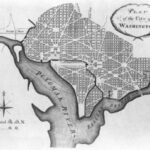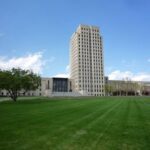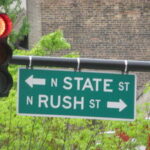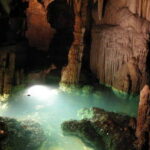Today, Deadwood feels nothing like a ghost town. Walking down the street, visitors are greeted by packed restaurants, clinking slot machines and live music. The souvenir shops are numerous, and during the summer, crowds gather along the streets to watch staged shootouts.
Located at the western end of South Dakota, Deadwood sits surrounded by the Black Hills National Forest. The town is about 15 miles southwest of Sturgis and about 40 miles northeast of Rapid City. Mount Rushmore sits about 45 miles southeast of Deadwood.
In short, Deadwood is a busy tourist attraction in a part of South Dakota where there isn’t always a whole lot going on. Yet, it seems that the town’s casinos are usually busy.
But that wasn’t always the case. In the mid-twentieth century, Deadwood was in such a serious decline that few believed the town would survive.
History of Deadwood, South Dakota — Ghost Town?
Founded in the early 1870s, Deadwood began auspiciously enough, despite the fact that the town was founded on land that belonged to the Lakota Sioux. Nevertheless, when General George Custer announced that gold had been found in the area, a rush began.
By 1875, hundreds of prospectors arrived, and before long, the town had reached a population of more than 5,000. Without a law enforcement agency, the town descended into lawless violence. Robberies and shootouts were common. So common, in fact, that by July of 1876, the local newspaper ran an editorial calling for a sheriff.
“Anyone who has been here for a space of a week and has witnessed the shootings, robbings, and brawls that enliven out nights and interrupt our days much realize that it is high time that some form of recognized law be established in Deadwood City,” The Black Hills Pioneer opined on July 13, 1876.
Wild Bill Hickok in Deadwood, South Dakota
It was around that time that one of Deadwood’s most notorious residents was killed. While playing at a gaming table, Wild Bill Hickok was shot in the back of the head and instantly murdered by Jack McCall.
The first blow to Deadwood’s population came in 1879, when a massive fire wiped out more than 300 buildings in the town. In 1883 a large flood forced another chunk of the population to move on.
As the town settled down a bit and became a mining community, some of the more violent and reckless citizens continued to the next gold rush town, too, and by the 1950s, Deadwood was facing serious employment and financial problems.
In 1961, the town was placed on the National Historic Register, but it seemed that there was little to be done in the way of saving the historic landmark.
Deadwood, S.D., Today: Gambling, Hiking, History
Until 1989, that is, when Deadwood was reborn as the Atlantic City of the Midwest, albeit with a western twist. Limited-wage gambling was legalized in Deadwood that year, and the new industry began to bring in new revenues. Before long, the town began to fill up with casinos, hotels and tourist hotspots.
Today, those visiting Deadwood can stop by the saloon where Hickok was shot. Tourists can head over to Mount Moriah Cemetery and visit the graves of Hickok and Calamity Jane.
And for those who enjoy the great outdoors, Deadwood is surrounded by several scenic trails, a beautiful national forest, and ski resorts. There are several tour companies based near Deadwood, and visitors can take quick, hour-long tours all of the historic spots in the city. In addition, several companies offer longer day trips to Mount Rushmore and other surrounding areas.
Today, Deadwood has largely rebounded from the economic downturn of the 1950s. The town has a population of 1,270, according to the 2010 census, and a booming gambling and tourism industry exists within the town.
You don’t have to be a gambler to enjoy Deadwood, though, and there is a little something for everyone, beginning with historical buffs and ending with outdoor enthusiasts.
Additional Sources:
O’Neal, Bill. “Ghost Towns of the American West.” Publications International, Ltd., 1995.





